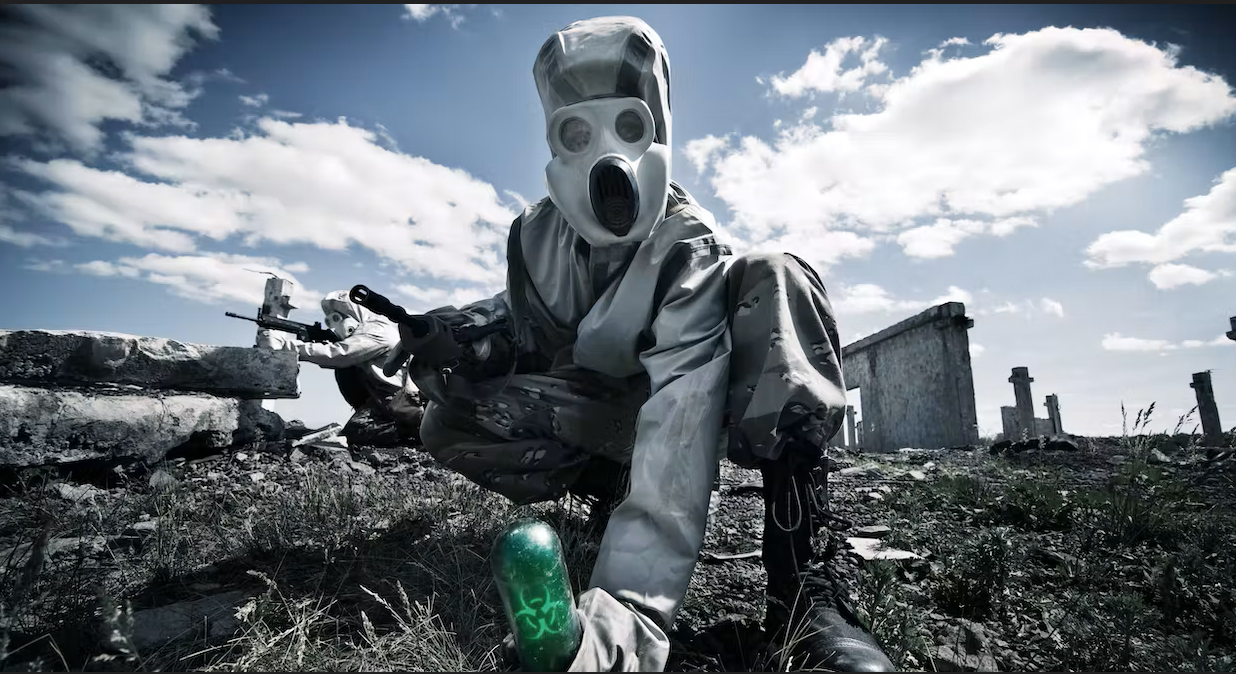“Biological warfare was potentially a most frightening method of armed conflict”[1]. The world has an obligation to determine the impact of the use of weapons of mass destruction on the future of warfare. Biological weapons, when produced and deliberately released to the environment, are characterised by their ability to disseminate disease-causing organisms to harm or kill humans, plants, and animals. The use of biological weapons is synonymous with armed conflict, terrorism and political assassinations where there is a sole objective to kill and introduce illness that should cause fear and mistrust in the public.[2] Biological weapons in an armed conflict have the potential to cause massive death, imminent fear, unnecessary suffering, and superfluous injury to non-combatants in the event of a war.
From the inception of the Covid-19 epidemic, WHO registered over 659 million confirmed cases of the virus and 6.6 million deaths.[3] In as much as we think of the Covid-19 insurgence as only a pandemic, we need to observe the danger with which this bacterial agent, capable of being used as a biological weapon, had caused. The use of a biological weapon can result into a pandemic that will cause massive disruption in any society[4].
Biological agents used to make biological weapons such as bacteria, fungi and dangerous toxins are by nature adapted to multiply and reproduce themselves as fast as possible. This means that there is an extremely great risk of death. Viruses such as the SARS-Cov attaches itself to the respiratory system making it hard for one to breath; this has great effect to vital body organs such as the lungs and the heart without which, the human body cannot function effectively[5]. Biological agents such as the EBOLA virus whose case fatality rate is between 25-90% are known to kill human beings within 2-3 days of infection[6].
The use of biological weapons poses a very high threat to human life and causes terrible casualties when used against the vulnerable civilian population. It accomplishes rapid spread of disease over a wide area and big population. The ability to control these weapons when used, will always be uncertain and indiscriminate. They are a threat to all human beings everywhere.
Biological weapons do not have the ability of differentiating between a combatant and civilian during warfare. They do not have the capacity to selectively target a military object rather than a civilian population because they are prepared to weaken and kill any human being without the prospect of distinction. As such, the international humanitarian law principles of distinction, humanity, and military necessity are undermined.
Article 48 and 51(4) of Additional Protocol 1 to the 1949 Geneva Conventions expressly emphasise the need to distinguish between the civilian population and combatants during armed conflict. It prohibits attacks that employ a method of combat which cannot be directed at a specific military objective. Indiscriminate attacks are of a nature that strikes military objectives and civilians or civilian objects without distinction.
The International Committee of the Red Cross (ICRC) holds the position that the use of biological weapons had been banned after the first World War.[7] However, the ICRC is concerned that the use of biotechnology could catalyse the deliberate spread and the creation of novel biological warfare agents for use, in conjunction with corresponding vaccines for one’s own troops or population[8].
I believe all stakeholders should join in the agenda to promote mutual understanding and effective action, international coordination through the improvement of national capabilities for disease surveillance, detection and diagnosis, and good public health systems. The complete ban on the use, stockpiling and production of biological weapons can only be achieved when the Biological Weapons Convention acquires international customary law status, binding on all states whether they are party to the convention or not. State parties with reservations to the Convention should be encouraged to withdraw them. Then and only then, shall we achieve the objective of a complete prohibition on the use of any form of biological weapon.
We can never overlook the ability of a biological weapon in causing mass destruction not only to combatants but to civilians and those protected by humanitarian law at any given time. We need to be promptly vigilant of the effects of the use of biological weapons in warfare; therein shall we be awakened to the great risk that it poses to every human being everywhere. Interest in the international health and security of all persons needs to be rekindled, for we can never be too careful when it comes to taking measures to prevent the use of biological weapons anywhere. Biological warfare will always be a frightening method of armed conflict.
[1] Statement made by David Ennals, British Minister of State for Foreign and Commonwealth affairs at the London Ceremony of the entry into force of the Biological Weapons Convention. https://www.un.org/disarmament/biological-weapons/about/history/ accessed on 29th January 2023.
[2] United Nations. Biological Weapons, https://www.un.org/disarmament/biological-weapons/about/what-are-biological-weapons/ accessed on 29th January 2023.
[3] WHO Coronavirus (COVID-19) Dashboard, https://covid19.who.int/ accessed on 30th January 2023.
[4] Guillouet-Lamy O. COVID-19, a Biological Weapon? A guide to Biological Weapons to Answer that Question. NCT Magazine, https://nct-magazine.com/nct-magazine-may-2020/covid-19-a-biological-weapon-a-guide-to-biological-weapons-to-answer-that-question/ accessed on 29th December 2023.
[5] Bruce Goldman, The Invader: How the new CoronaVirus penetrates, exploits and kills cells, https://stanmed.stanford.edu/how-coronavirus-destroys-cells-treatments/ accessed on the 30th January 2023.
[6] WHO, Ebola virus disease, https://www.who.int/news-room/fact-sheets/detail/ebola-virus-disease accessed on the 30th January 2023.
[7] ICRC. Chemical and Biological Weapons, https://www.icrc.org/en/document/chemical-biological-weapons accessed on the 29th of December 2023.
[8] ICRC, Biotechnology, Weapons and Humanity. https://casebook.icrc.org/case-study/icrc-biotechnology-weapons-and-humanity accessed on the 4th of January 2023.

